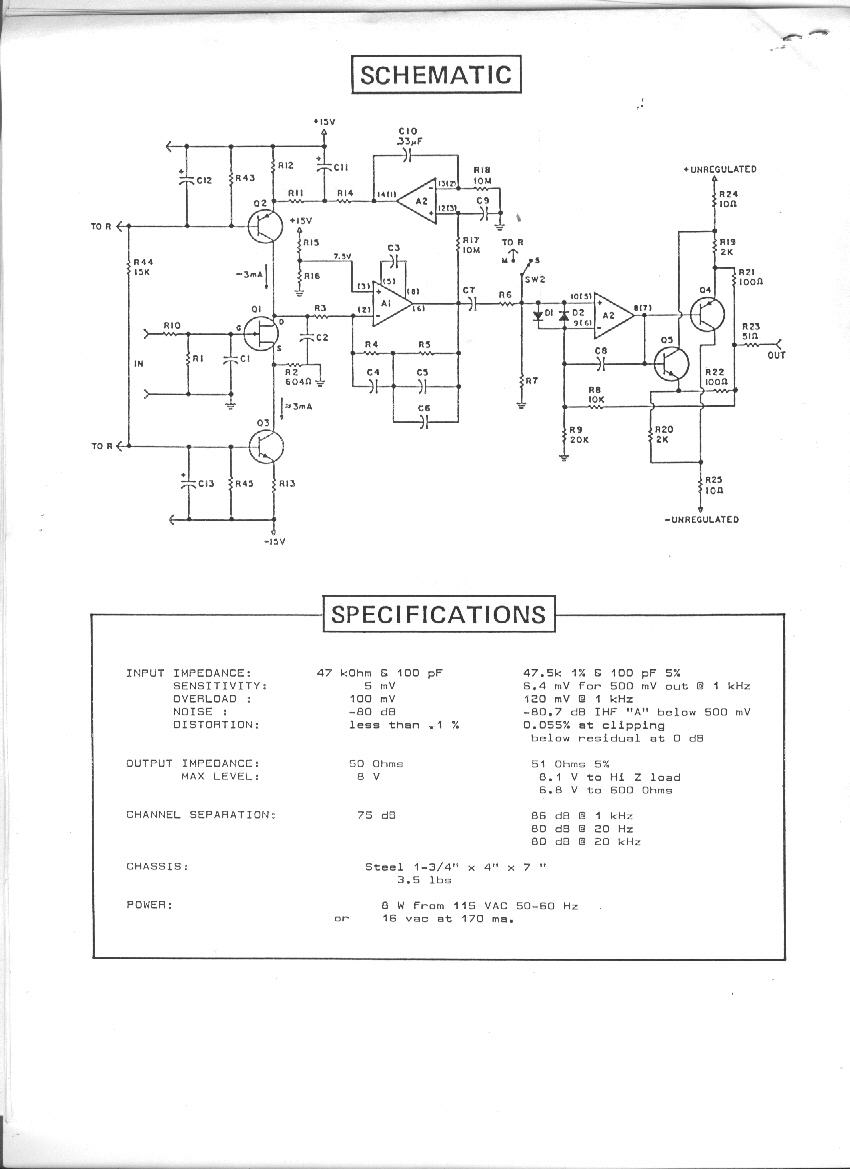dubwarrior said:
Hy
I want to build a simple phono preamp
Ive got thie schematic from somewhere, i think a friend gave it to me and said its a ggod one ;-)
https://www.dropbox.com/s/gxuuu8xxcz2x1ba/Schaltplan.jpg?dl=0
So my question is, C3 and C11 are 47uF Caps, what should i use for the, ive checked WIma, but they are pricey and realy big, should i use bipolar elcos?
Or something different?
Thanks in advance
rico
In the actual state of technology, I think you don't have much choice.
However, C3 and C11 can be substantially decreased as they are loaded by 100kohms, giving a -3dB LF corner of 0.03Hz.
C3 could easily be decreased to 1uF with no noticeable effect.
As for C11 and R12, they have no real use, one could easily do without them; I would just connect the output of IC1 directly to the non-inverting input of IC2.
Even C16 could probably be reduced in view it will probably never see a load smaller than 10k, which results in a -3dB LF corner of 0.3 Hz, or a response only 0.0012dB down at 20Hz.
Finally, do they need to be bipolar?
Regarding C16, yes, since one does not know whatever DC offset would present the load to which the preamp is connected; indeed, many commercial products use standard polarised caps because they are perfectly capable of withstanding small amounts of reverse voltage - WARNING: not true of tantalum caps.
Then regarding C3, the offset at the input of IC1 is always negative because the input transistors are NPN; as a result, you could use polarised caps with the negative side connected towards the opamp's input.
As to C16, it's a little more complex because the DC offest at the output of IC1 is the combination of the effects of the input bias current in the 100k (which is negative as in the first stage) minus that produced in the feedback network (which is less because the resistance is smaller) AND the opamps input offset voltage. IMO, the best option is to short it out, which solves the issue definitely; other options are:
a) a bipolar cap
b) a polarised cap placed in accordance to effective DC measurements
c) a polarised cap placed randomly, knowing that the very low voltage would not have any really significant consequence




